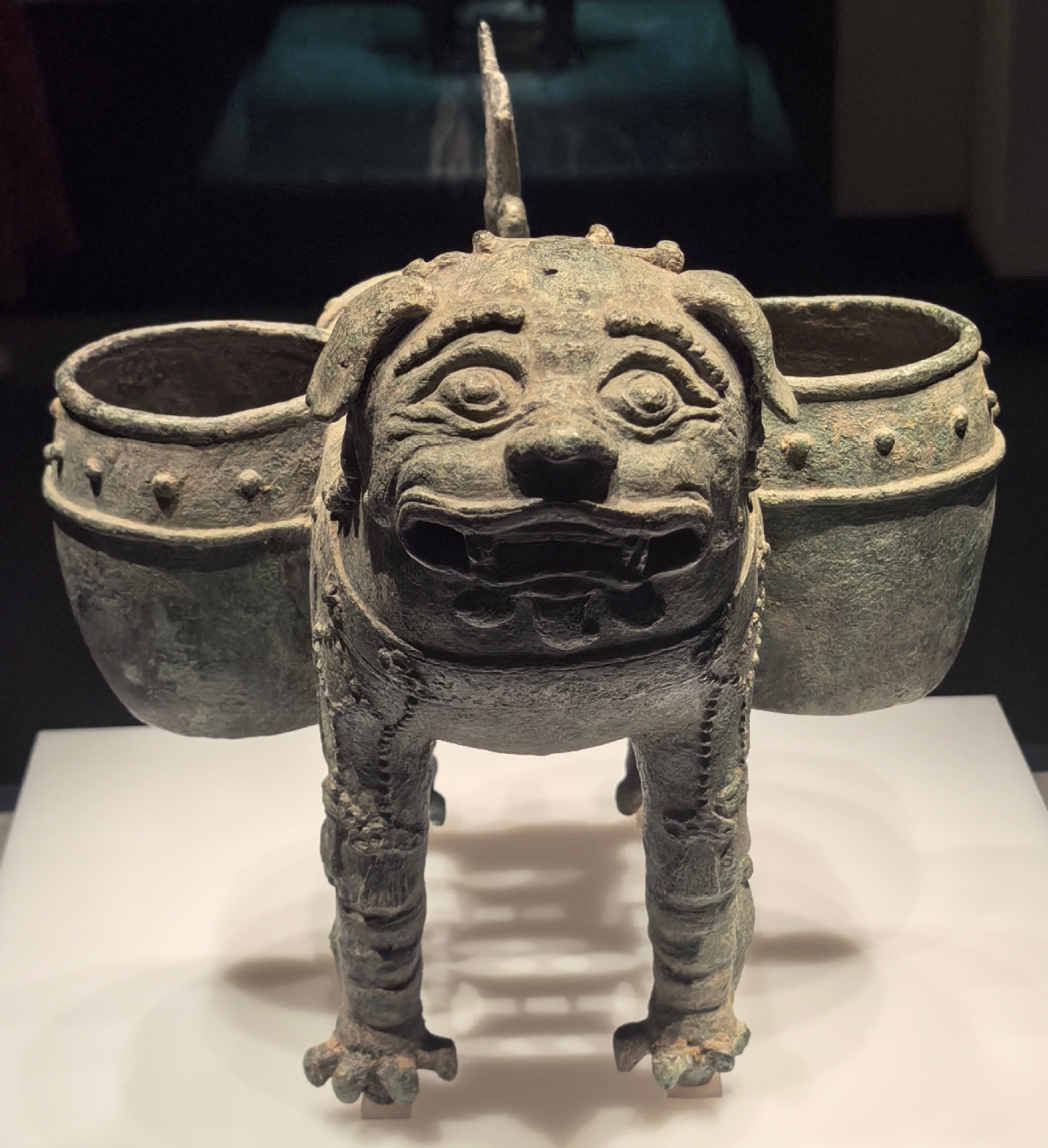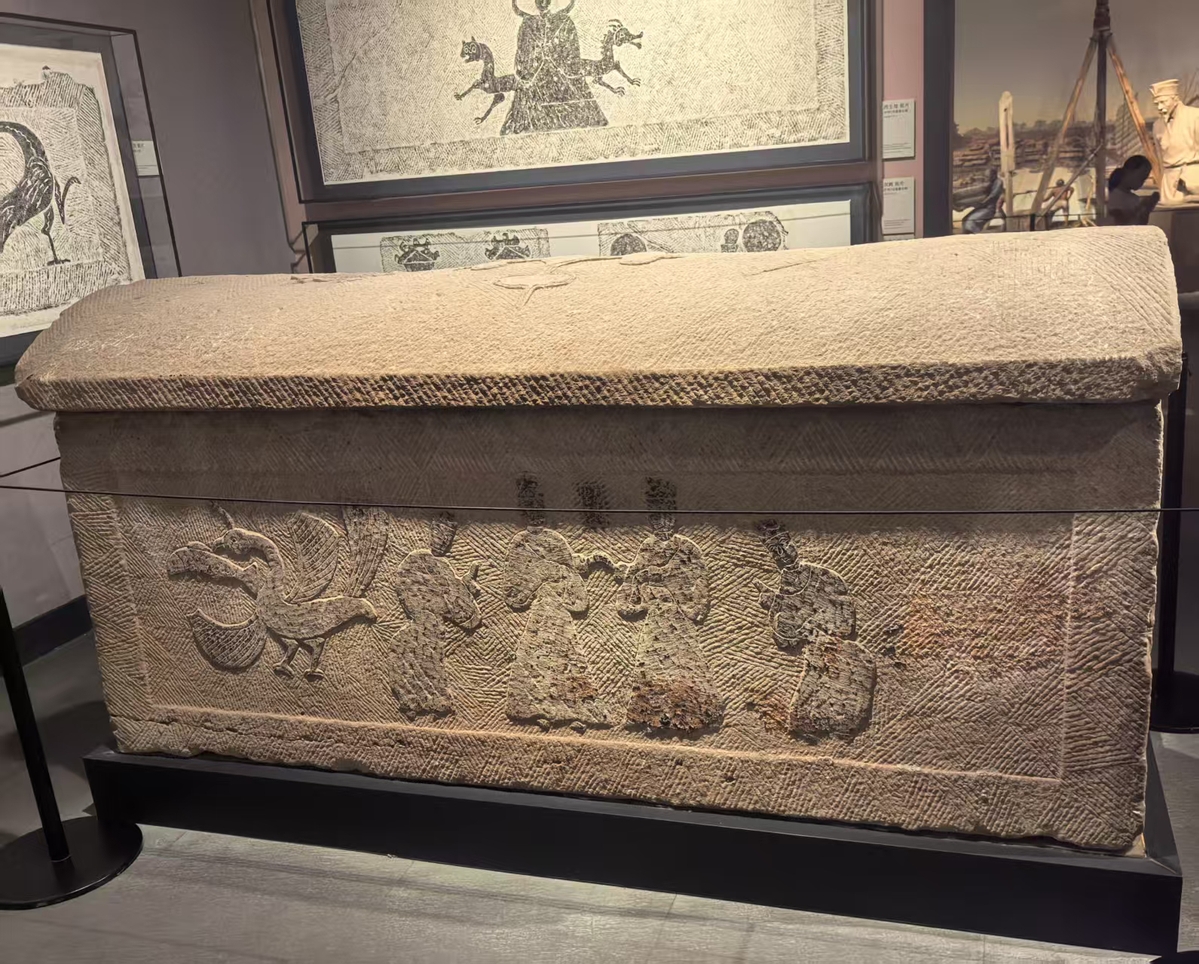
The Ming Dynasty (1368-1644) bronze Kirin Wine Warmer in the Luzhou Museum.[Photo provided to chinadaily.com.cn]
A major national institution, the Luzhou Museum which was established in 1984,reopened its doors to the public free of charge on June 27 after a 150-day renovation. More than 24,000 people have since visited the museum.
Its painting and calligraphy collection ranks it second only to the Sichuan Museum in the provincial capital of Chengdu, according to Hong Ye, an information officer in the Luzhou Museum.
The museum’s painting and calligraphy collection is highlighted by masterpieces from the Ming and Qing dynasties (1368-1911) as well as artwork from modern times.
Luzhou is the birthplace of artist Jiang Zhaohe (1904-1986), one of themostrenowned Chinese artists of the 20th century.
The museum hasproudly dedicated its entire second floor to Jiang’s works.
With the Yangtze and Tuojiang rivers flowing nearby, Luzhou is famous foralcoholproduction, with its liquor output accounting for 25 percent of the national total.
The city’s brewing legacy stretches back to the Qin and Han dynasties (221BC-AD 220). One of the world’s top 10 main liquor production areas, Luzhou has been recognized by the United Nations Food and Agriculture Organization and UNESCO as an ecological zone most suitable for brewing quality and pure distilled beverages

The Hundred Children Stone Carving created in 1668 during the Qing Dynasty (1644-1911).[Photo provided to chinadaily.com.cn]
Many museum-goers are drawn by the city’s mascot, a bronze liquor warmer, the Kirin Wine Warmer, made in the Ming Dynasty (1368-1644).
Unearthed in Luzhou in 1986, the artefactis a nationally treasured first-class cultural relic and is regarded as the perfect combination of liquor culture and art in Luzhou.
The warmer weighs 9 kilograms. The drinker would light the charcoal in the lower area of the kirin, heating the wine glasses in the water of its buckets.
Another eyeopener about Luzhou’s liquor culture in the museum is the Hundred Children Stone Carving created in 1668 during the Qing Dynasty (1644-1911).
The carving, formerly housed in the Zhenru Temple which was first built in the Tang Dynasty (618-907), has 17 scenes depicting daily life and folk customs of Luzhou.
The scene showingsix boys joyfully drinking and frolicking is quite impressive and amusing and justifies Luzhou’s reputation as a city with a strong alcohol tradition since ancient times.
Boasting a collection exceeding 10,000 cultural relics, including over 1,000 nationally precious ones, the Luzhou Museum shines particularly bright in artifacts reflecting liquor culture, stone carvings, and paintings and calligraphy.
The stone carving collection is renowned for exquisite Han Dynasty(206 BC-AD 220) and Song Dynasty (960-1279) sculptures.
Complementing exhibits like the Han and Song sculptures, the museum utilizes stunning photos and a video to showcase the magnificent Longnao Bridge in Luxian, a county under the administration of Luzhou.
Constructed between 1378 and 1398 during the reign of Zhu Yuanzhang, the first emperor of the Ming Dynasty, the 54-meter-long Longnao which literally means Dragon Head is 3 kilometers north of the Luxian county seat and has 11 pillars.
Both the east and west sides of the bridge are supported with three pillars each. The eight pillars in the middle bears works of huge carvings of different animals representing good luck like dragons, lions, elephants and kirins.
The four dragons have their heads up and captivate visitors with their vividly rendered eyes, ears, mouths, noses, eyebrows, scales as well as flowing cloud motifs.
Inside the mouth of each dragon is a bead weighing more than 50 kilograms.
As each dragon head and bead are carved from a single stone using the hollow-out technique, each bead can roll freely but cannot be taken out.Luo Zhewen (1924-2012), an esteemed scholar of ancient architecture, hailed it as the second finest bridge in China, placing it just behind Beijing's Lugou Bridge.

A sarcophagus dating back to the Han Dynasty (206 BC-AD 220) in the Luzhou Museum.[Photo provided to chinadaily.com.cn]
 Editor:Qiu Xiaochen
Editor:Qiu Xiaochen